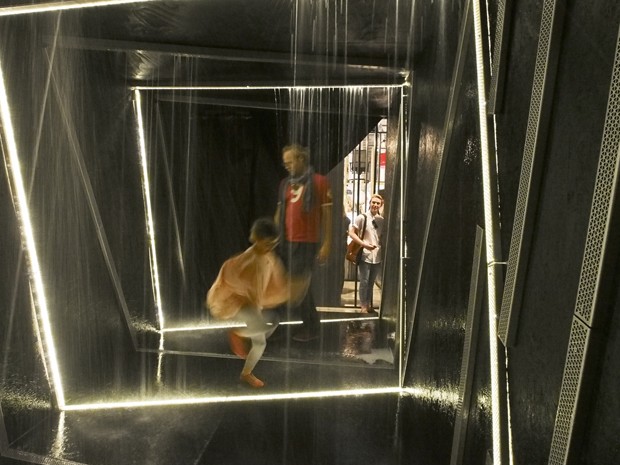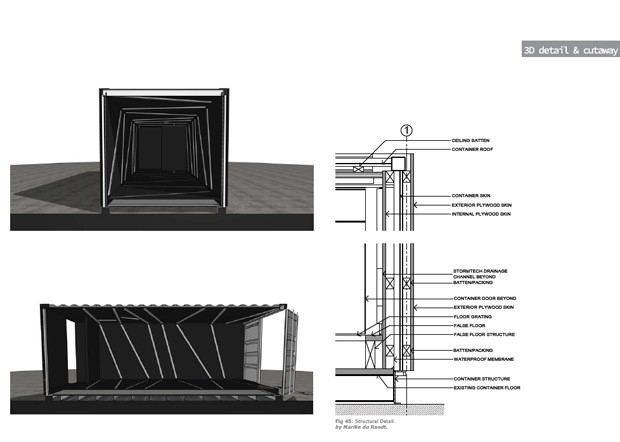As part of Sydney Indesign 2013, architectural firm Rice Daubney collaborated with Stormtech to create an installation that fostered creative interaction between suppliers, retailers, designers and event-goers.
Developing an ‘Outside of the Box’ concept to deliver a literal ‘Inside the Box’ design, Rice Daubney wanted to create a project that would highlight the process and relationship between design and manufacturing, while showcasing Stormtech’s latest Marc Newson designed grate.
The Perfect Storm project features a standard shipping container, which was reinvented by Stormtech as the structural frame for the installation. Rice Daubney then mounted the linear grates internally and illuminated the path to form a maze.
The grates, which incorporate Marc Newson’s signature tessellated hexagonal pattern, provided the water, but also collected it. They were clad externally in a lighting strike which showed off the grates’ design and the available colour range – satin stainless steel, satin black, white, pearl brass, and blue.

According to Julia Sutcliffe, an associate at Rice Daubney, the ‘project’ was inspired by the Random International’s Rain Room at the Barbican, London.
“Obviously the technology and budget was on a totally different scale to ours but we liked the challenge of creating an interactive installation which fundamentally made drainage cool,” says Sutcliffe.

However, the installation did meet some design difficulties. Firstly, designing a structural frame for the grates was a challenge, but Managing Director of Stormtech Troy Creighton managed to source a shipping container that fit perfectly on the team’s allotted space at Sydney Indesign.
Moreover, being a robust structure, the frame easily supported the grates, allowing it to be erected off site and transported to the event.

A second challenge was the cost of the project. Initially, Rice Daubney wanted to have the water on motion sensors, so that as visitors walked through, the water would stop running. However, this idea proved too expensive, and the team decided to utilise a maze to steer the visitors through the experience.
“I think we got the perfect outcome. The continuous rain-like maze enabled groups to enter and share the experience without the added complication of time delays and motion sensors. It really was the Perfect Storm!” says Sutcliffe.
The team has since been invited to have their installation re-used at a number of other design shows.

